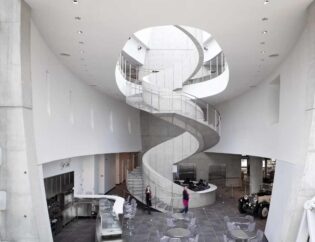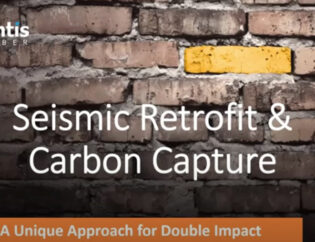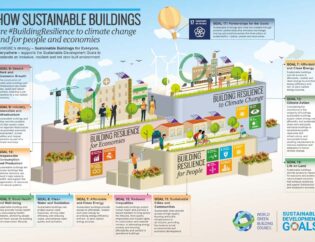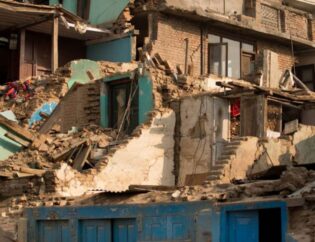
Concrete, unfortunately, isn’t forever. When the repair of concrete structures and surfaces becomes necessary, there are resources that designers and contractors can rely on to make the process more efficient and safe, and which results in higher quality and more durable concrete repairs.
The American Concrete Institute (ACI) recently released ACI 562-19: Code Requirements for Assessment, Repair, and Rehabilitation of Existing Concrete Structures and Commentary, the third version of the concrete repair code developed by ACI as a “performance-based document for the assessment and repair of existing concrete structures.” And, the International Concrete Repair Institute (ICRI) came out with Technical Guideline No. 320.1R-2019, Guide for Selecting Application Methods for the Repair of Concrete Surfaces, to “help illustrate the methods commonly used for the repair of deteriorated concrete surfaces using cement-based repair materials and to highlight the applications for which each method is considered to be most suitable.”
Combined, these documents provide guidance that elevates repair to the same level as the design and construction of new concrete structures. The industry-recognized that too many concrete repairs were failing much too soon. The advice in these new resources provides a way to consistently produce durable concrete repairs.
ICRI Repair of Concrete Structures Guide
The ICRI guide starts with this statement: “Achieving success in concrete repair begins with the recognition that each repair situation is defined by a unique combination of circumstances including type and extent of deterioration, structure type, exposure, working environment, personnel, schedule, and others.” That means that each repair project should have a flexible approach, while still adhering to the basics. It also means that mock-ups are often needed to verify that the proposed approach will “satisfy the project requirements.”
One basic requirement for any repair project is surface preparation. “The quality of surface preparation is probably the single most important factor that contributes to the success of a repair. The substrate should be sound, roughened, clean, and saturated surface dry.” The guide goes on to describe the factors that influence surface preparation: repair materials to be used, desired concrete surface profile (CSP), methods and equipment to be used, the possible presence of contaminants, the substrate moisture condition, the desired cleanliness of reinforcing steel, and the presence of cracks and joints.

Selection of Repair Methods
The essential content in ICRI 320.1 is a systematic approach to selecting the materials and methods for a repair. Here’s how to start:
1. Consider the repair material properties most necessary to restore the integrity of the original design and to remain durable in the service environment.
2. Consider the methods of repair material placement that can be used to effectively and efficiently place the repair material onto the prepared concrete. This typically includes consideration of site constraints and total quantities of repair.
3. Select a repair material that provides the needed material properties and that can be placed by the most appropriate application method.
ICRI encourages the repair contractor to place the durability of the repair above ease of application and, when in doubt, to consider a mock-up or sample repair.
The size of the repair dictates both the application method and how the material should be mixed. The flowchart at the top of this page shows how the volume of repair material should guide the decision. “Larger repairs require mixing greater quantities of material, and tend to require more automated methods of application.” The three repair application methods to consider are unformed hand-applied, formed applications, and pneumatically applied (shotcrete).
The guidance for each of these three methods is divided into five categories:• A general description.
• The best applications for each method.
• The material requirements.
• The advantages.
• Cautions and limitations.
Unformed Hand-Applied Method: “This application method is typically intended for shallow, non-structural, resurfacing of deteriorated vertical and overhead concrete substrates where steel reinforcement is not visible after preparing the repair area.” This method is only intended for non-structural repairs, and it is ideal for small-scale repairs.
Formed Application Methods: There are four of these to consider.
• Dry Packing: “Suitable for repair of relatively low-volume cavities with a high degree of confinement and open-sided access.”
• Form and Pour/Partial- and Full-Depth Cast Repairs: “Use for columns, walls, beams, and slabs with a repair thickness/depth of approximately 2 inches or more.”
• Form and Pump: “Suitable for overhead and vertical applications, including where reinforcing steel is exposed.”
• Preplaced Aggregate: “Suitable for vertical and overhead applications where extremely low shrinkage of repair material is required.”
Pneumatically Applied Methods: There are three shotcrete methods to consider for repairs:
• Dry-Mix Shotcrete: “Best suited for large vertical and overhead areas or curved surfaces with small-diameter bars and minimal congestion of reinforcement.” Dry-mix has the advantage over wet-mix of allowing thicker buildup on overhead surfaces. It is also easier to start and stop since the materials remain dry until they reach the nozzle.
• Wet-Mix Shotcrete: Wet-mix is suitable for the same applications as dry-mix but has the advantages of greater placement rates and less rebound.
• Low-Pressure Spray: “Typically used for vertical and overhead repairs.” This method produces less rebound than traditional wet- or dry-mix shotcrete and since the nozzle can be closer to the repair surface it can be used in tighter spaces.

Safety is always a consideration in any construction project, including repairs. Potential hazards include those from the work environment (heat, falls), repair materials (cement burns), and equipment used. “A safe construction site only occurs when there is a culture of safety that includes appropriate training in hazard awareness and recognition, and personal accountability.”
Every repair project has its own unique challenges. Following these guidelines doesn’t necessarily assure a successful and durable repair but it does provide a system for making decisions based on the many years of experience from the authors. Copies of the Guide for Selecting Application Methods for the Repair of Concrete Surfaces are free for ICRI members or $62 for nonmembers, available at icri.org.
In this article’s companion piece, Keith Kesner, senior project manager at CVM Engineers and member of Committee 562 for ACI, details the improvements and updates in the latest version of the American Concrete Institute’s ACI 562 (ACI 562-19: Code Requirements for Assessment, Repair, and Rehabilitation of Existing Concrete Structures and Commentary). Click here to read that article.










